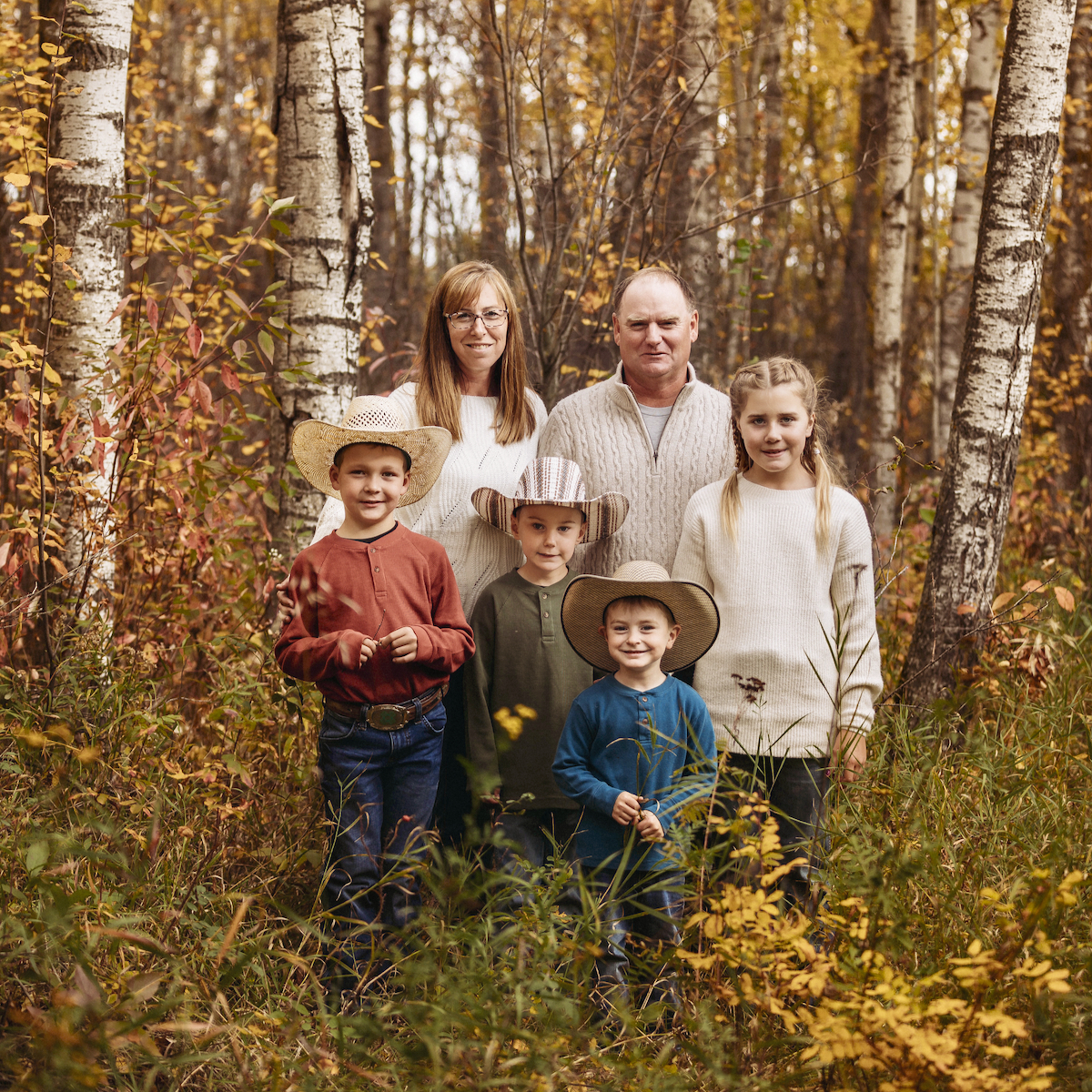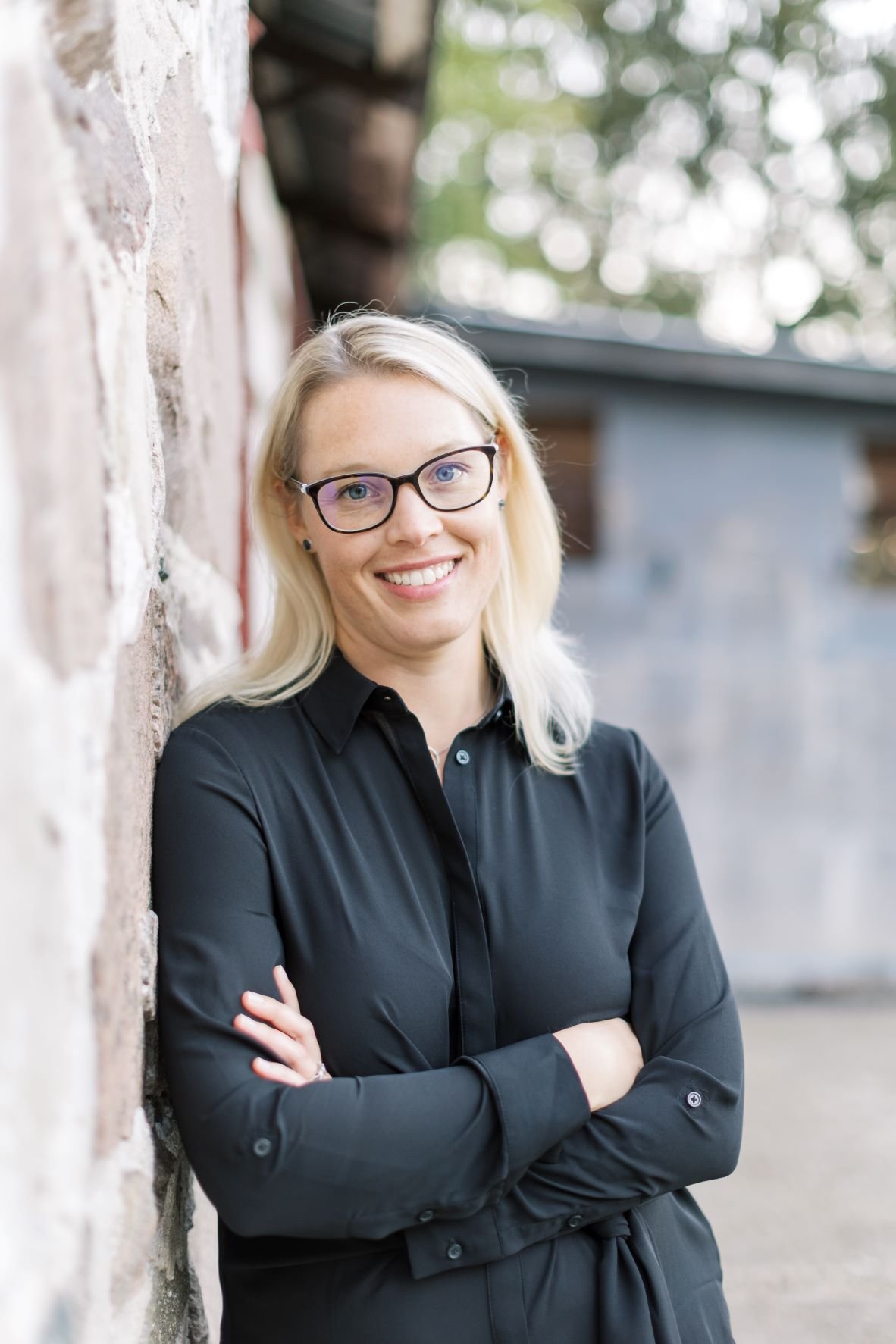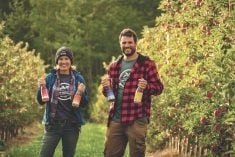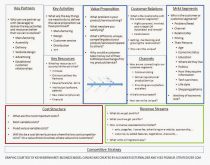Every January business partners DJ Wassenaar and Matt Bergman take a day to set goals for the coming year. It’s a practice that’s proven successful for their partnership and an integral part of their planning process.
“We always need something to aim for, and whether the goal is attainable or not, giving ourselves a direction to point at helps keep everyone focused and aligned,” says Bergman.
Bergman and Wassenaar own and operate Haybury Farms Inc. and Claybank Organics where they grow conventional and organic crops in Jarvis, Ont., and in the Algoma district of northern Ontario. The two entrepreneurs also operate Winfield Contracting, a commercial snow removal business that serves Haldimand County, and a construction business, County Line Construction.
Read Also

What to consider when setting up farm-related business ventures
Things to consider before launching a farm-adjacent side business.
Managing diverse businesses across varying seasons, geographic locations and growing climates means Bergman and Wassenaar depend on their staff of 19 full-time employees, open communication and strategic planning to achieve success.
“Our business relies on a handful of people to manage everything, so we need them (and ourselves) to show up at their best both physically and mentally,” explains Bergman. Bergman says individual goals can be health- or family-related while business goals are divided into the relevant enterprises, but they are all intertwined.
Business partners since 2015, Bergman and Wassenaar have grown their farm operation to 4,500 acres between the two Ontario locations. The expansion to northern Ontario in 2021 came from their goal to invest in land that made the most financial sense. After significant research and an unsuccessful attempt to partner with a larger group to expand north, the two invested in 1,500 acres in the Algoma district where they felt their dollars would stretch the most. “It was a giant leap of faith, but we believe northern Ontario is where the land market is heading,” says Wassenaar.
Managing more land in two distinctly different farm locations requires more equipment. To maximize horsepower, the partners float their tractors back and forth between locations, driving more than six hours each way, and keep tillage, planting and harvest equipment at each farm.
Bergman says he’s blessed to have such a good business partner in Wassenaar, noting that neither of them would be able to own and manage their businesses independently. Both believe that surrounding themselves with good people is key to their success. They rely most on their accountant for guidance, and seek professional and informal advice from agronomists, industry specialists and peer networks. “Farming has changed so much, that we’ve found the most value in talking to people of similar age, experience and situations,” says Bergman.
Success for the long term
Bergman explains that all their businesses are dependent on the weather, so they break their business planning and goals into seasonal three-month periods. Monthly meetings between Bergman, Wassenaar and their management team keep everyone on track and feed the agendas for weekly staff meetings.
Wassenaar says that their goals have changed as the scope of their business has grown. And as they’ve grown their ability to take on more risk has expanded too. This year, the team set out to achieve their biggest goals yet: to increase the profitability of their northern Ontario acres so the farm can be a self-sustaining operation and complete a three-year shop building project. Wassenaar says that the shop build fits into their long-term expansion strategy because its new size will accommodate future business growth. “Long-term planning is constantly on our minds and part of our annual written goals,” he explains.
For Bergman and Wassenaar, planning long term means looking five to 10 years ahead. Within the next decade they would like to expand their equipment lineup to match their land base, accumulate more acres and transition into more management less hands-on roles. They both have young families, and like many farmers, struggle with balancing their workload and time with family. Bergman says it’s hard to learn to let go of the day-to-day so one of his goals is to enhance middle management roles within their companies to take some pressure off him and Wassenaar.
The challenge is how to measure success when so many of their production and financial goals are tied to variables they can’t control, such as weather, input costs and commodity markets. But Wassenaar believes if their business and personal lives are better off than the year before, they are making progress. And if they don’t achieve their goals, they try again.
“Sometimes I like it when we don’t meet our goals because it gives us a reason to look at things critically and fuels our motivation,” says Bergman. “Success looks different for everyone, and for us, our goals are focused on growth, efficiencies and progressive management.”
Legacy underlies decisions
Father and son team David and Brett Francis are expanding their mixed farming operation of seed potatoes, field crops and beef to enhance the farm’s sustainability for the next generation. They trust their instincts and make one decision at a time.
Decisions made on Francis Farms in Lady Fane, P.E.I., are rooted in generational knowledge passed down through the family since it was founded in 1844. And decisions must result in a farm profitable enough to support the family, nimble enough to adjust to market conditions and provide a balance between work and lifestyle.
“If the decision feels good and you’re truthful with yourself about the situation, then it’s likely the right choice to make,” says David. He says that it’s also important to weigh external factors into every decision, but that with so many uncontrollable dynamics in agriculture, it’s best not to get too caught up in negative “what ifs.”
David admits the family never follows a formal goal-setting process. They take the same, practical approach that has served the family for generations: they look internally to assess their strengths, assets, equipment and what they enjoy doing.
Since Brett returned to the farm after graduating from Dalhousie University in 2008, the family has set and achieved several goals, each designed to reduce the farm’s exposure to risk.
Francis Farms has grown seed potatoes for generations and has developed a reputation for high-quality products. Their cost of production is higher, given the specialized equipment, stringent regulations and inspections, and the labour required to sort and ship seed potatoes each spring.
“We’re proud to provide seed for potatoes grown across the province,” says David. “It’s a unique opportunity, and our goal is to continue to serve this niche market.”
Traditionally, the family sold the potatoes on the open market, but five years ago they decided to mitigate their risk by contracting their potato production. Today, 80 per cent of production is contracted to processing growers in P.E.I. Not only did they reduce their marketing risk, but they were able to refocus their resources on expanding their land base and crop and livestock marketing.
Like many farms, the Francis family relies on rented land. They work hard to maintain great relationships with their landlords and recognize the importance of a reliable land base for the sustainability of their farm. “The sustainability, profitability and the ability for the next generation to take over the farm factors into every decision we make,” says David.
The family is also diversifying to further improve sustainability and risk management goals. They’ve added a feedlot to finish their cattle, and they’ve purchased feeder cattle to expand the herd. Three factors influenced this decision: the proximity to Atlantic Beef Products, a federal beef processing facility just eight miles down the road; the ability to utilize their own feed sources and market their crops through the finished beef rather than selling their barley and straw through previous channels; and a new year-round employment opportunity to maintain a reliable labour source. Since they already know how to manage beef cattle and had most of the equipment to expand, the decision made sense.
Future vision
Despite an informal approach to planning, decisions are not made lightly on Francis Farms. David and Brett work closely with their spouses, Vicki, a retired social worker, and Keshia, a school social worker. Both are involved in the farm management and contribute to its success. The family also relies on trusted advisors, especially their tax specialist and accountant who visit the farm regularly, and they acknowledge the hard work of their full-time and seasonal employees. And while not always planned, the impromptu business meetings in the shop or around the kitchen table are where open and honest communications help shape the strategic direction of the farm’s future.
David and Brett’s vision is to maintain the legacy of a productive, efficient, profitable and enjoyable place to live and work. “Farming is a responsibility, and I want to create an environment that supports and feeds our family and community, while leaving what we’ve built for the next generation,” says David.
Strategic intents
Stacey Meunier is certain there’s no way she and her husband Chad would be where they are today if they weren’t intentional about following their farm values. “Our values and vision statement guide our day-to-day decisions and our overall goals,” explains Stacey.
Chad and Stacey own Meunier Livestock Ltd. in Barrhead, Alta., where they raise 4,500 cows, manage a finishing feedlot and crop forages to feed their cattle. Ranching with the help of 16 full-time staff and raising four children keeps the couple busy, especially since the farm has grown substantially since they took ownership of the family operation in 2016.

They set their vision for the farm on day one and “Everything we do must align with our vision: thriving plants, animals and people,” Meunier says.
Meunier refers to their goals as intents and says they have typically identified four to five overarching intents in each of their strategic plans. “Our approach to setting our goals, or intents, creates a framework that enables us to make detailed plans that inform our decisions,” she explains.
Each set of intents — they’re on their third iteration — is incorporated into the farm’s business plan. Measurements are established for each goal, but as Meunier points out, because agriculture is constantly changing, they are prepared to adjust or change their intents to meet each new situation. Some measurements are tied to numbers, like their 2021 goal to increase crop yields, while others, such as learning to farm by their values, are harder to quantify.
Their approach helps them define short- and long-term goals, though Meunier points out that on a farm, a short-term goal can take a few years, while a long-term goal could be 10 or even 100 years when factoring in farm sustainability and succession.
Looking back, Meunier says their initial set of intents was very task oriented, and their most important goal was developing a comprehensive succession plan. Their second round of intents was focused on increasing revenue and decreasing operational costs. At the time, they also challenged themselves to farm by their own values and align everything they did with their five core values: honesty and integrity, strong work ethic and efficiency, being intentional, community and continued learning.
“Intentionally farming by our values was one of the most challenging, yet impactful goals that we set for ourselves,” reflects Meunier. “If we hadn’t written the goal and acted deliberately, we may not have achieved it.”
Their third, and most recent set of intents proved to be the most difficult. In December 2023, Stacey and Chad found themselves at a crossroads about the direction for their business. They had recently expanded and were facing a tough cattle market, so they reached out to a trusted advisor for help. “By consulting a third-party advisor, we were able to gain input, decide on and clarify what will serve our farm,” she says.
Their latest set of intents is quite broad compared to previous versions, but this shift reflects the complexity of their business and changes made in recent years. For example, two of their intents are to develop and expand key relationships and improve management and operational infrastructure. Intents might be general, but Meunier says they’ve identified key action items and assigned timelines that will help them achieve their goals.
Shared goals
“It’s easy to set goals, but if you don’t see them every day, or position them in front of you, I question the ability to get them done in a timely manner,” says Meunier. That’s why their current list of strategic intents is posted on the office wall. She says this keeps them focused on their end goals and provides a visual for staff to see what everyone is working towards.
The farm’s vision statement is also posted on their office wall and company vehicles so everyone in the community can see what they stand for.
Stacey and Chad use bi-weekly staff meetings to share how each intent fits into the overall picture of the farm’s success and update staff on tasks associated with each intent. “It’s important that everyone understands how our goals impact everyone individually and as a whole,” says Meunier. The couple also make a point of sharing accomplishments at monthly staff lunch-and-learns so everyone can celebrate their contributions.
“If we don’t achieve our intent after two years, we analyze the situation. Sometimes we shelve the idea and come back when the time is right,” says Meunier.
Meunier’s advice to farmers: make time to get away from the farm to plan. “Space and distance help with clarity and finding a new perspective,” she says. She also recommends openly communicating goals with family and staff, so everyone buys into the idea and overall direction.
“Setting strategic intents is the key to our success,” she says.
















